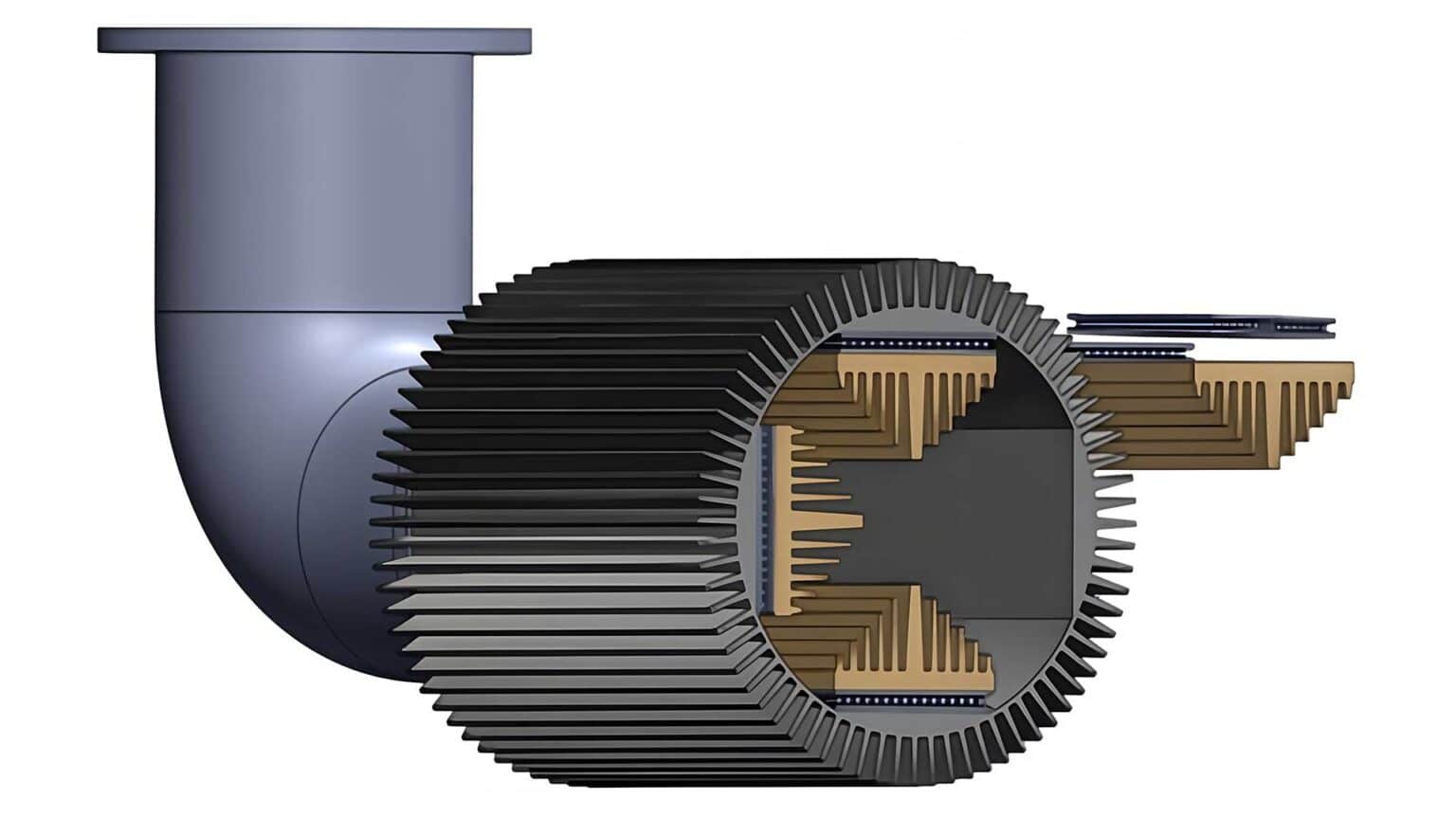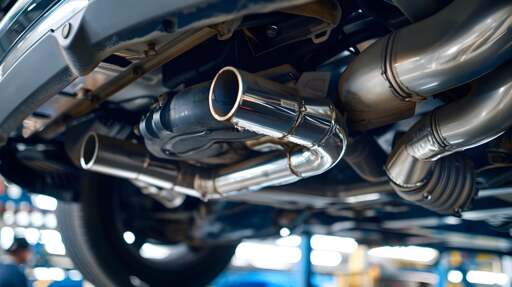
This device attaches to a car’s tailpipe, capturing heat and converting it into usable electricity. The researchers’ innovative system includes a semiconductor made of bismuth-telluride and uses heat exchangers—similar to those found in air conditioners—to capture heat from vehicle exhaust pipelines efficiently.
Basically, slap Peltier modules on the exhaust pipe. This ain’t gonna do much. We can invent a thousand applications for Peltier modules, until there is a massive technology breakthrough in terms of semi-condutor materials, it’s kinda pointless.
Reusing heat energy from exhaust is what turbos are doing for 120 years now.
This concept isn’t new either. Factories have been using very similar methods to use the heat of the exhaust gasses to power the sensors and whatnot on top of their smoke stacks for some time now, for example.
The article opens with saying only 25% of the fuel’s energy gets used by the motor, 75% is in the heat of the exhaust. I’ll take that as a given. Let’s assume a small motor (in this inventions favour) with a nominal power of only 60 kW, running only at half tilt, 30 kW.
That gives us 90 kW in the exhaust heat by the numbers of the article. So the 56 W it captured in the simulation would be 0.046% of the total 120 kW power being converted by burning the fuel, raising the efficiency from 25% to 25.046%.
The headline is so massively overstated it’s basically just a lie. If the device was built, not just simulated, and you’d manage to substitute part of the alternator’s ouput with the thermoelectic generator’s output, the effect on fuel economy would be below the measurable level.
In simulations mimicking high-speed environments, the waste-heat system demonstrated great versatility; their system produced up to 56 W for car-like exhaust speeds and 146 W for helicopter-like exhaust speeds, or the equivalent of five and 12 lithium-ion 18650 batteries, respectively.
A great step!
Next is build one.
Then cheap-ish and durable.
I doubt this will ever become any useful at all. 50 Watts is nothing compared to what the car engine outputs at high speed. Even a small engine has some 35kW, i.e. 35000 Watts.
I could see it maybe being used as an emergency back up alternator, just enough to keep lights on and engine firing (with storage) to get you to safety.
Do alternators fail that often?
Nope. It does suck when they do.
Wouldn’t be powerful enough actually. You’re better off having a battery that’s in good condition. I’ve done nearly 100 km with the alternator belt off. It being a diesel, it didn’t need to fire sparks though.
It being a diesel, it didn’t need to fire sparks though.
That’s cheating :P
I doubt regenerative braking will be ever useful at all because Lord knows you’re not going to get the same energy back that you took out while driving. /s
This is just to increase efficiency.
Sometimes efficiency gains aren’t worth the cost and complexity. Regenerative braking produces a shitton more power than this, so it’s worth it (also, the motors are already there, just run them in reverse and turn them into generators). You can get the same thing by slapping a solar panel on the roof. Which nobody is doing because it’s too costly and complex for what you get out of it.
Show this to any automotive engineer and count how many seconds before they start laughing
isn’t this basically the old F1 MGU-H system that they kept having issues with and eventually gave up on?
Edit: no, that system, confusingly, is an electric motor/generator connected to the turbocharger.
Was also terribly expensive. The performance to cost wasn’t worth it even for F1
MGU-H works very well, and they’re only getting rid of it in 2026. Mainly to keep new upcoming F1 engine manufacturers happy as they don’t have experience in MGU-H systems.
Only getting rid of them next year I’m pretty sure. And initial problems of reliability but not these days. With phenomenal thermal efficiency from tiny engines
OMG they’ve actually introduced the 2025 Turboencapulator.
Not enough power to affect anything
Fools logic. This is a single system imagine the world running systems like this on every device or system, then the amount adds up. Energy recovery is the future. Maximizing what we can produce. Sustainability.
We already do this at every steam based power plant in the world (basically everything but hydro, PV, and wind) and it’s done much more efficiently. Doing this stuff with tiny gadgets on micro generators like ICE vehicles is a pretty inefficient implementation, especially as it adds weight to already heavy vehicles, decreasing efficiency and safety, and increasing tire and brake wear. The only place I can imagine this being useful is very heavy vehicles that for some reason still have to be using diesel like long haul trucks/busses, diesel freight trains etc and the like. And EVEN then you’re looking at major issues with economy. If you increase the weight of a truck by 2 percent to give it a 2% increase in fuel efficiency, you are hurting not helping. 2% comes off of your GCVWR margins and suddenly you need 51 trucks instead of 50 trucks to transport a given load, not only increasing your fuel use by 2% but also increasing vehicle maintenance and tire and brake pollution by 2%
Edit: I’m not saying relatively miniaturized energy recovery systems don’t have a future, but I’m dubious it’s in transport or handheld devices. At least for the foreseeable future. Infrastructure scale however has always been a major application for energy recovery development, stirling engine, steam turrbine and TE development keeps getting further pushed to eek efficiency out of power stations, power plants, substations, emergency generators, maybe even HVAC systems and other building scale applications.
It even says in the article 40 watts. I’m not going to say this affects literally nothing, but it is not a significant enough amount of power to meaningfully affect the locomotion of a car. It might make more sense in much more scaled up helicopters and planes where fuel economy is a far bigger problem. But thermoelectric has never been a very potent method.
Also, you’ve got some nerve calling someone a fool for not assuming we will retrofit every motor on earth with this technology. There are a lot of things that would be nice to retrofit the entire installed base of the world with. But that is an enormous barrier that only…. fools ignore.
Fools logic was meaning this type of technology doesn’t have a purpose when it definitely does and that is how your post came off lack of context I guess, it is the internet.
While it won’t power the locomotion of the car it will help to power accessories even on a 40w basis even more so over trips and somewhat lengthy drives.
Your post lacked any of your clarifications so it comes off as you simply think this is an ignorant waste of time concept as a whole. Energy recovery is a useful premise.
But making micro machines to do it, or retrofitting old cars with this wouldnt help much but manufacturing newer more effecient vehicles isn’t a viable strategy like the guy explains above you. There’s other uses besides moving a vehicle, hydro would be one of the biggest. There’s other fields and applications this could be used for having nothing to do with configuration. All I was saying was that this tech has viability.
You are confusing me with other person. Read the names.
Oh damn 😂 my bad.
This type of technology and the concepts of energy conservation and recovery are so damn cool. Think of drainage recovery systems for showers sinks and gutters, sewage, and on and on for various applications and types of recovery.
I remember when I first learned about regenerative braking when the first Priuses were coming out. Shit blew my mind.









